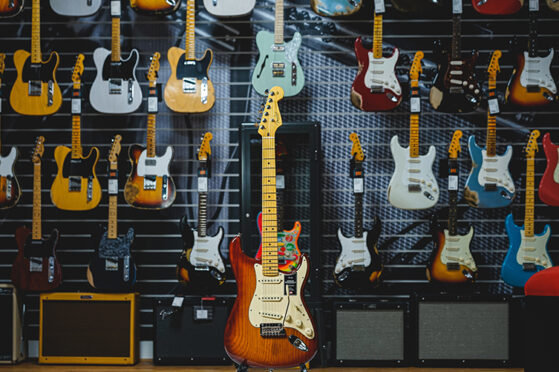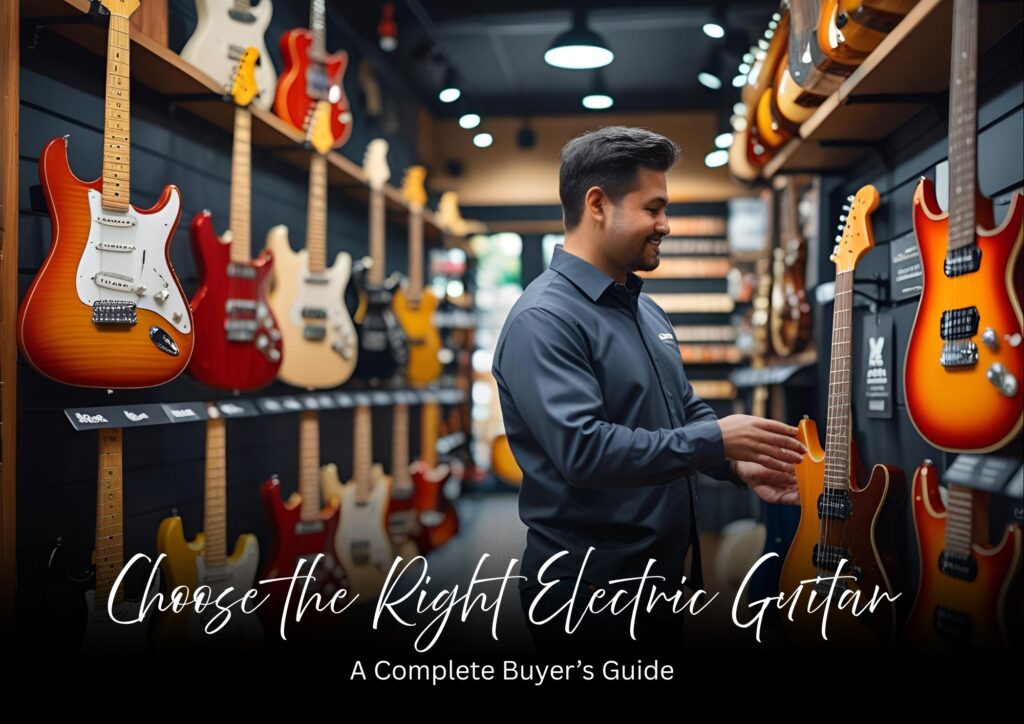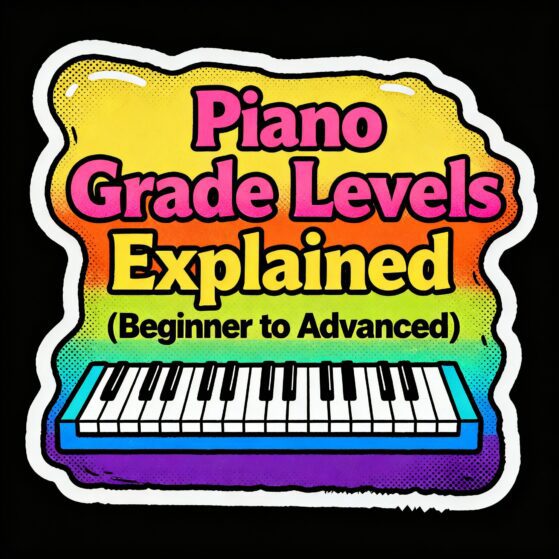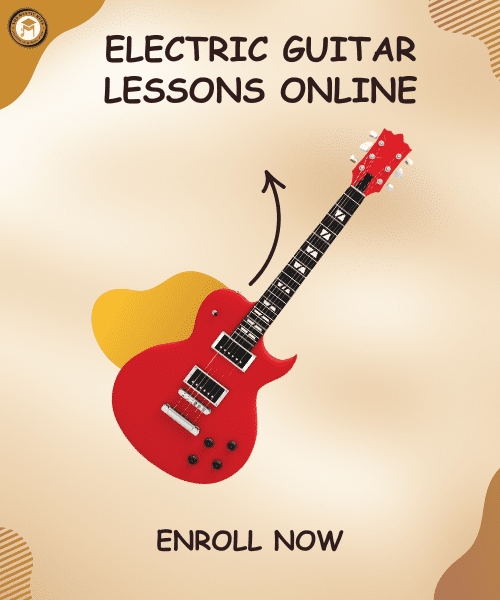Choose the Right Electric Guitar | A Complete Buyer’s Guide
The electric guitar is more than just an instrument — it is a voice. From the gritty distortion of rock and metal to the warm, mellow tones of jazz, the sound of an electric guitar has shaped entire genres. But every guitarist, whether beginner or advanced, eventually faces one crucial decision: which guitar truly fits my style? Choose the Right Electric Guitar is not just about sound — it’s about finding an instrument that complements your technique, reflects your personality, and inspires you to keep playing.
Choosing a guitar isn’t only about price or looks. It’s about matching the instrument to your playing style, musical aspirations, and comfort level. A guitar that feels like an extension of yourself will inspire creativity and push you to practice more often. On the other hand, choosing the wrong guitar can leave you frustrated and disconnected from your music.
Let’s walk through the process of choosing an electric guitar in detail, so you can find the perfect fit for your playing style.

Choose the Right Electric Guitar Based on Your Playing Style
The first step in choosing a guitar is understanding yourself as a musician. What type of music excites you? Which artists inspire you? Your preferred genre and technique will heavily influence the kind of guitar that suits you best.
Rock and Blues: If you’re drawn to expressive bends, crunchy riffs, and soulful solos, you’ll need a guitar with versatile pickups and solid sustain. Classic models like the Fender Stratocaster or Gibson Les Paul are timeless choices here.
Metal and Hard Rock: For heavy riffs and aggressive tones, you’ll want high-output humbuckers and possibly a guitar with a thin, fast neck for speed. Brands like Ibanez, ESP, and Jackson excel in this area.
Jazz and Soul: Clean tones are everything. Semi-hollow or hollow-body guitars with smooth, rounded sound profiles work best. The Gibson ES-335 or Ibanez Artcore models are favorites.
Pop and Indie: If your style involves light strumming, melodic riffs, or effects-heavy playing, look for versatile guitars with clear single-coil pickups.
Beginners/Explorers: If you’re still discovering your style, aim for a versatile guitar that can handle multiple genres. Stratocaster-style guitars are excellent all-rounders.
Once you know your style, you can narrow down the features that will enhance your sound.

Choose the Right Electric Guitar Body Type
The body of a guitar affects not just tone but also resonance, weight, and comfort. Understanding body types will help you decide which feels right for you.
Solid Body: The most common type. These guitars are durable, versatile, and can handle high volumes without feedback. They’re excellent for rock, metal, and blues. Examples include Fender Stratocaster, Telecaster, and Gibson Les Paul.
Semi-Hollow Body: These guitars have a solid center block with hollow wings, giving them warmth and resonance while still controlling feedback. They are great for jazz, blues, and indie rock. A classic choice is the Gibson ES-335.
Hollow Body: Fully hollow guitars produce warm, resonant tones but are prone to feedback at high volumes. Jazz players love them for their rich sound. Think Gibson L-5 or Gretsch hollow bodies.
Your choice depends not only on genre but also on how much feedback control and tonal warmth you need.

Choose the Right Electric Guitar Pickups
Pickups define how your guitar translates string vibration into sound. Each type creates a distinct voice:
Single-Coil Pickups: Bright, crisp, and articulate. Perfect for blues, funk, and pop. However, they can produce hum at high gain. The Fender Stratocaster is iconic for its single-coil sound.
Humbuckers: Designed to cancel hum (hence “hum-bucking”). They produce a thicker, darker, and more powerful tone, making them essential for hard rock, metal, and jazz. The Gibson Les Paul is a classic example.
P90 Pickups: A unique blend — they’re chunkier than single-coils but not as heavy as humbuckers. They’re loved in punk and classic rock.
Active Pickups (like EMG): Powered by a battery, these deliver consistent, high-output tones with little noise. Popular in modern metal.
Some guitars combine pickup types (HSS, HSH configurations), giving you flexibility across genres.

Choose the Right Electric Guitar Neck Profile and Scale Length
The neck is the part you’ll touch the most, so comfort here is essential.
Neck Profiles: Shapes like “C,” “U,” and “V” determine how the neck fits in your hand. Slim C-shapes are fast and comfortable for smaller hands, while chunkier profiles provide grip and stability.
Scale Length: The scale length (distance between nut and bridge) influences tension and tone. Fender’s 25.5″ scale length gives brighter tones with tighter string tension, while Gibson’s 24.75″ scale offers warmer tones and easier bends.
Fingerboard Radius: A flatter radius (e.g., 12”) is great for fast solos and shredding, while a rounder radius (e.g., 7.25”) is ideal for chord-heavy playing.
If possible, try out different necks in a music store. Comfort is personal — what feels right for someone else might feel wrong for you.

Choose the Right Electric Guitar Bridge System
The bridge plays a huge role in tuning stability and creative expression.
Fixed Bridge (Hardtail): Simple, stable, and easy to maintain. Perfect for beginners and rhythm players.
Tremolo/Vibrato Bridges: Allow pitch bends and vibrato effects using a whammy bar. Common on Stratocasters.
Floyd Rose (Locking Tremolo): A specialized system for extreme pitch shifts while maintaining tuning stability. Favored by shred and metal guitarists.
Think about how often you’ll use vibrato tricks. If you just want stability, a fixed bridge may be your best friend.

Tonewoods and Construction
While often overlooked, the type of wood affects resonance, sustain, and tone color.
Alder: Balanced, bright tone — common in Fender Strats.
Mahogany: Warm, full-bodied sound — found in Gibson Les Pauls.
Maple: Bright, snappy tone, often used for necks and tops.
Basswood: Light and balanced, common in Ibanez guitars.
Construction quality also matters — bolt-on necks give snappy tones, while set necks and neck-through builds enhance sustain.

Aesthetics and Comfort | The Emotional Factor
Your guitar should inspire you. While tone is key, looks and comfort matter too:
Weight: Heavy guitars (like Les Pauls) sound great but can strain your back over long gigs. Lighter guitars (like Stratocasters) are easier to handle.
Design: Do you prefer the vintage charm of a Telecaster or the modern edge of an Ibanez?
Finish & Color: While cosmetic, this can motivate you to pick up the guitar daily. Many players form a strong bond with instruments that visually reflect their personality.

Choose the Right Electric Guitar Within Your Budget
Electric guitars range from budget-friendly beginner models to professional masterpieces.
Beginner Level (₹10,000–₹25,000 / $150–$350): Great to start, with good sound and build. Look at Squier, Epiphone, or Yamaha Pacifica.
Intermediate Level (₹25,000–₹60,000 / $350–$800): Better components, more refined tones, and improved playability. Fender Player Series, Epiphone Inspired by Gibson, or Ibanez RG are great picks.
Professional Level (₹60,000+ / $800+): Premium woods, high-quality pickups, and craftsmanship. Gibson USA, Fender American Professional, PRS, and custom models shine here.
Always budget for an amplifier, tuner, strap, and case — your guitar won’t sound complete without them.

Choose the Right Electric Guitar by Testing It
No matter how much research you do, the best guitar is the one that feels right in your hands. Visit a music store if possible, or listen to detailed demos online. Strum chords, play scales, bend notes, and see how the guitar responds. Trust your instincts — because in the end, to truly choose the right electric guitar means finding the instrument that connects with you on a personal level. When you find “the one,” you’ll know.

Choose the Right Electric Guitar with the Future in Mind
Your playing style may evolve over time — what excites you today may not be the same music you’ll want to explore a few years from now. That’s why it’s wise to think ahead when choosing your instrument. Opting for a versatile guitar, especially one with multiple pickup options, gives you the freedom to experiment across genres without needing to upgrade too soon. When well cared for, a quality electric guitar can serve you faithfully for decades, adapting to your growth as a musician. In other words, your first serious guitar shouldn’t just meet your current needs — it should be a long-term partner on your musical journey.

Conclusion
Choosing the right electric guitar is a journey, not a race. It begins with understanding your unique playing style and gradually exploring the features that bring out the best in your sound. Every element — from the body type that shapes the resonance, to the pickups that define the tone, to the neck profile and even the aesthetics — plays a role in creating an instrument that truly feels like yours. When you set out to choose the right electric guitar, you’re not just comparing specifications — you’re finding the instrument that connects with your musical voice.
The process isn’t just about technical details; it’s also about connection. The guitar you choose should not only suit your style but also inspire you to pick it up, practice more often, and perform with confidence. A well-matched guitar becomes an extension of your musical identity, shaping both your sound and your journey as a guitarist.
At The Mystic Keys, our Electric Guitar Lessons Online are designed to guide you through every step of this journey — from understanding how to choose the right electric guitar to mastering advanced techniques. With expert teachers and a flexible online format, you can confidently grow as a guitarist while playing the instrument that truly matches your style.
For more information and exciting resources about learning music, visit our website at The Mystic Keys. For more music content and exciting offers follow us on
Facebook, Instagram, YouTube, LinkedIn, Twitter, Pinterest, and Threads,








